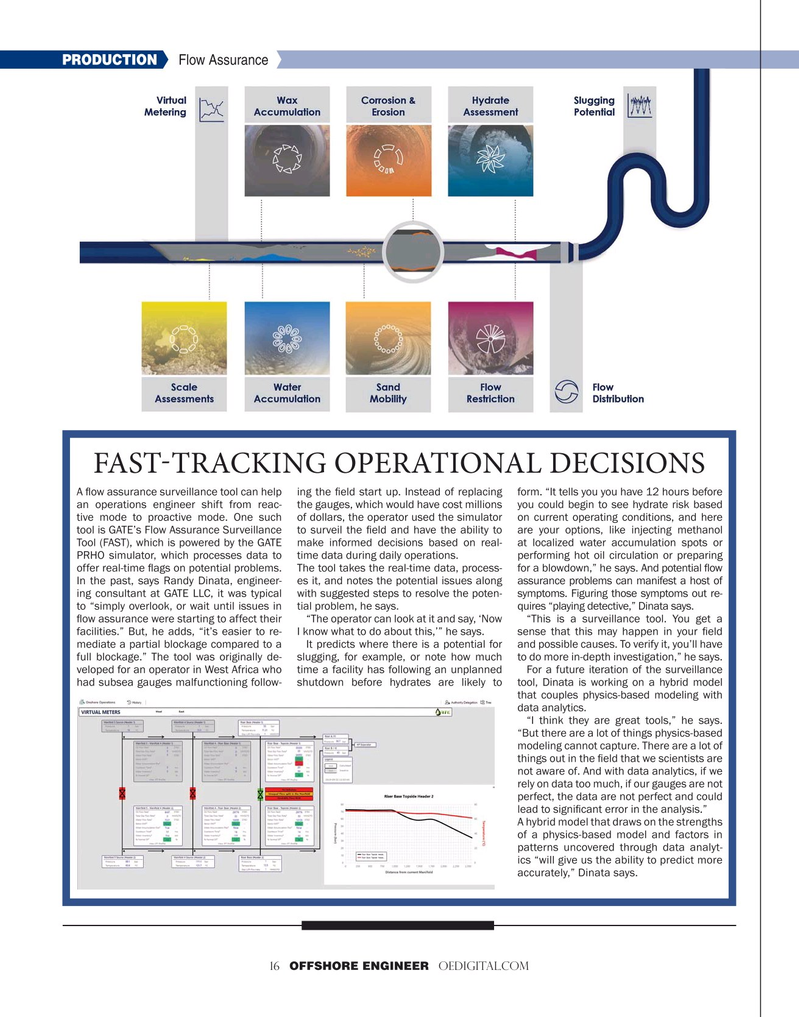
Page 16: of Offshore Engineer Magazine (Mar/Apr 2020)
Offshore Wind Outlook
Read this page in Pdf, Flash or Html5 edition of Mar/Apr 2020 Offshore Engineer Magazine
PRODUCTION Flow Assurance
FAST-TRACKING OPERATIONAL DECISIONS !
^ _ form. “It tells you you have 12 hours before an operations engineer shift from reac- the gauges, which would have cost millions you could begin to see hydrate risk based tive mode to proactive mode. One such of dollars, the operator used the simulator on current operating conditions, and here QV"X!
Y ^ are your options, like injecting methanol
Tool (FAST), which is powered by the GATE make informed decisions based on real- at localized water accumulation spots or
PRHO simulator, which processes data to time data during daily operations. performing hot oil circulation or preparing ? The tool takes the real-time data, process- !![ !
In the past, says Randy Dinata, engineer- es it, and notes the potential issues along assurance problems can manifest a host of ing consultant at GATE LLC, it was typical with suggested steps to resolve the poten- symptoms. Figuring those symptoms out re- to “simply overlook, or wait until issues in tial problem, he says. quires “playing detective,” Dinata says.
!
! “The operator can look at it and say, ‘Now “This is a surveillance tool. You get a [\ ] " - _!! "[ ^ mediate a partial blockage compared to a It predicts where there is a potential for " full blockage.” The tool was originally de- !
to do more in-depth investigation,” he says.
veloped for an operator in West Africa who time a facility has following an unplanned For a future iteration of the surveillance had subsea gauges malfunctioning follow- shutdown before hydrates are likely to tool, Dinata is working on a hybrid model that couples physics-based modeling with data analytics.
“I think they are great tools,” he says. “But there are a lot of things physics-based modeling cannot capture. There are a lot of ^ ! not aware of. And with data analytics, if we rely on data too much, if our gauges are not perfect, the data are not perfect and could ^ [
A hybrid model that draws on the strengths of a physics-based model and factors in patterns uncovered through data analyt- ics “will give us the ability to predict more accurately,” Dinata says.
16 OFFSHORE ENGINEER OEDIGITAL.COM

 15
15

 17
17